Many companies have a name for their events and some standard colors.
They settle for what sounds "fun" or, we hate to say it, easy. Or the "way it's always been."
But they're missing out on an opportunity to really make their events work for their business.
The most successful event leaders create cohesive branding that inspires and connects to their larger organizational goals.
They know that events represent a unique opportunity to cut through the noise of daily life and communicate with key stakeholders. When done right, attendees walk away with those messages buzzing in their brains and the brand on their lips.
So let's talk event branding, why it's important to your company, and how you can craft a successful event brand that will have people talking about you well after the event ends.
Short summary.
- Event branding includes all the elements of your event from messaging to the visuals. It resonates throughout your event, from the time someone receives their invite to when they're onsite.
- Event branding is important to help your guests feel connected to your event and also to reinforce your brand throughout.
- There are several elements to consider when you're putting together an event brand, from presentation slides to branded coasters.
- Creating a successful event brand starts with understanding your audience and goals, and requires consistency throughout the planning and execution process.
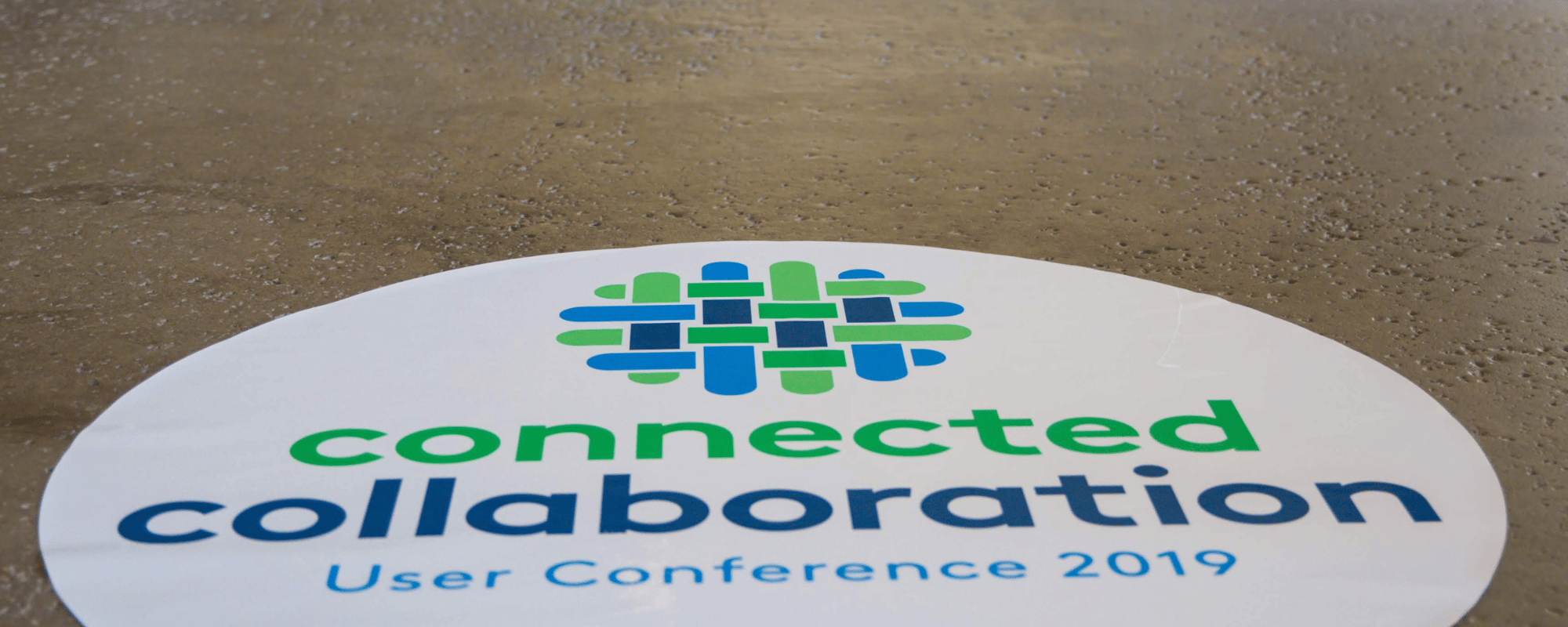
What is event branding?
Event branding is like giving your event a personality and a set of clothes. It has an identity. Something your audience can resonate with and remember even after your event is out of sight.
Imagine attending a tech conference where everything, from the stage setup to the content on screen to the swag bags, screams innovation and cutting-edge technology. That's effective event branding.
The layers of branding include visual elements such as logos and color schemes, but also the communication aspects like the invites, the words on the screen, the stories your speakers tell, and the workshops you host.
Just like the time you spend on your company's brand, your event branding is about creating that emotional connection between your audience and brand. It's not just about slapping your logo everywhere; it's about crafting a holistic experience that tells a story and leaves a lasting impression.
We recommend creating a brand identity for your event that's separate from your company brand, giving the event its own place in people's minds, but still tying back to your overall brand identity.
Why is event branding important?
Event branding is crucial because it helps create a strong and memorable identity for your event, leaving a lasting impression on attendees. Plus, it can be lucrative for your brand.
When attendees have a positive and cohesive brand experience throughout the event, they are more likely to remember and connect with your brand long after the event concludes. That brand recognition can equal greater brand loyalty and ultimately more cash.
Event branding is also important because it helps differentiate your event from competitors. By incorporating consistent visuals, messaging, and experiences, you can establish a distinct identity so your event stands out and resonates with your target audience.
We've seen the benefits of event branding in action.
One of our new clients approached us to help them make their annual user conference more effective.
They had all the elements: trade show floor, enticing sessions, fun evening events.
But what they lacked what cohesion.
When they chose to host their event in Dallas, we helped them develop thoughtful event branding that not only incorporated their company's brand elements but also tied in the Western theme to the conference.

Every aspect of the event, from the trade show floor to the event swag tied into the event brand and brand story, creating a cohesive theme across the entire event. All these elements tied together helped the attendees understand the event's purpose and feel more engaged. It ultimately contributed to the event's success.
Take a look at the entire case study.
Event branding matters.
Let's look at how to create effective event branding.
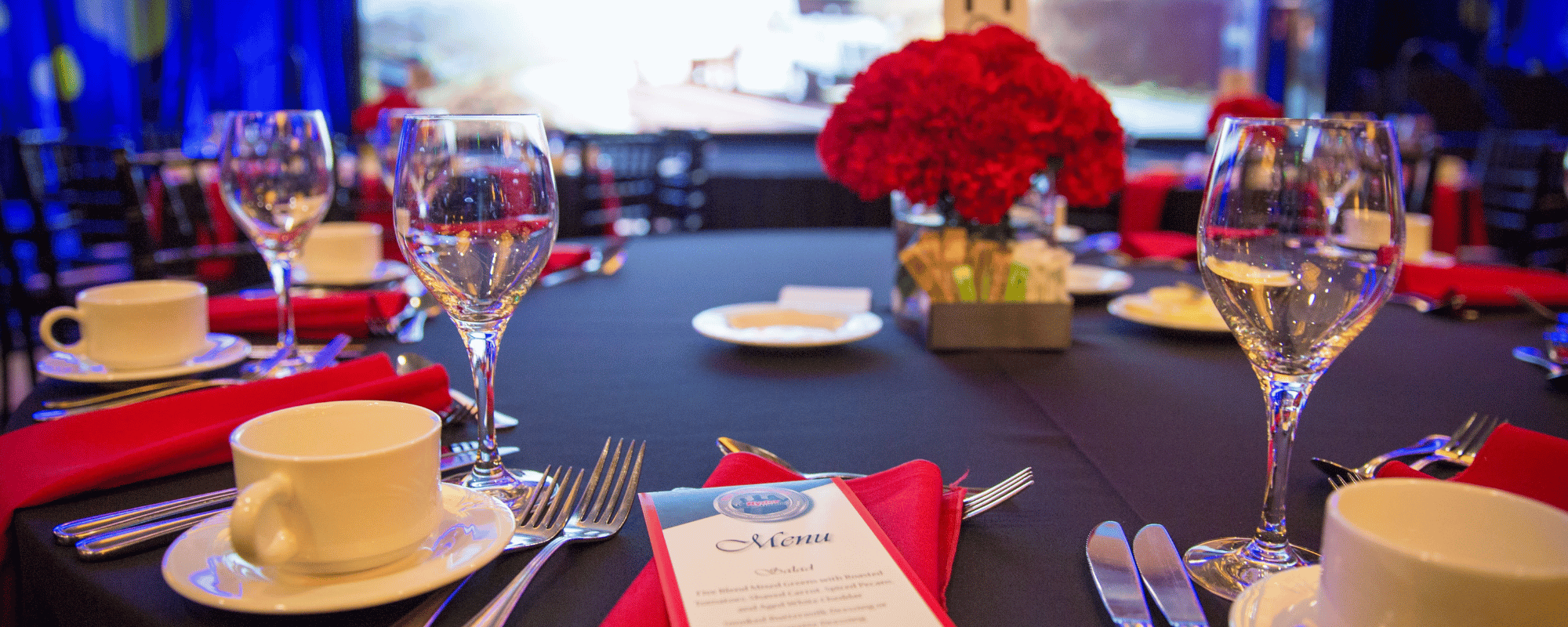
What elements are included in event branding?
Let's look at a quick overview of what to consider when building an event brand. Here are all the event branding elements to consider.
All visuals.
This includes your logo, presentations, onsite branding, and event promotions
Marketing materials.
Consider any marketing materials such as invites, social media posts, and even phone calls (what messaging should you use when you call people?).
Messaging elements.
Messaging elements include the event tagline, the stories you'll tell, and the content you present, and even things like your event hashtag or social media captions.
Technical elements.
Consider your event website, app, and any onsite technology like charging stations, digital agendas, and more. This also includes branding for your virtual event.
Videos.
Make sure the videos created before and after your event follow your event brand.
Event swag.
Your giveaways, shirts your crew will wear, and even things like coasters at evening events, branding on chairs, signage, and other fun elements, can all contribute to a cohesive brand.
Onsite experiences.
This will be things like interactive exhibits or photo booths, that your attendees will capture and share online. You can even incorporate things like a location-specific sticker for social media platforms so people can share your event out with their followers.
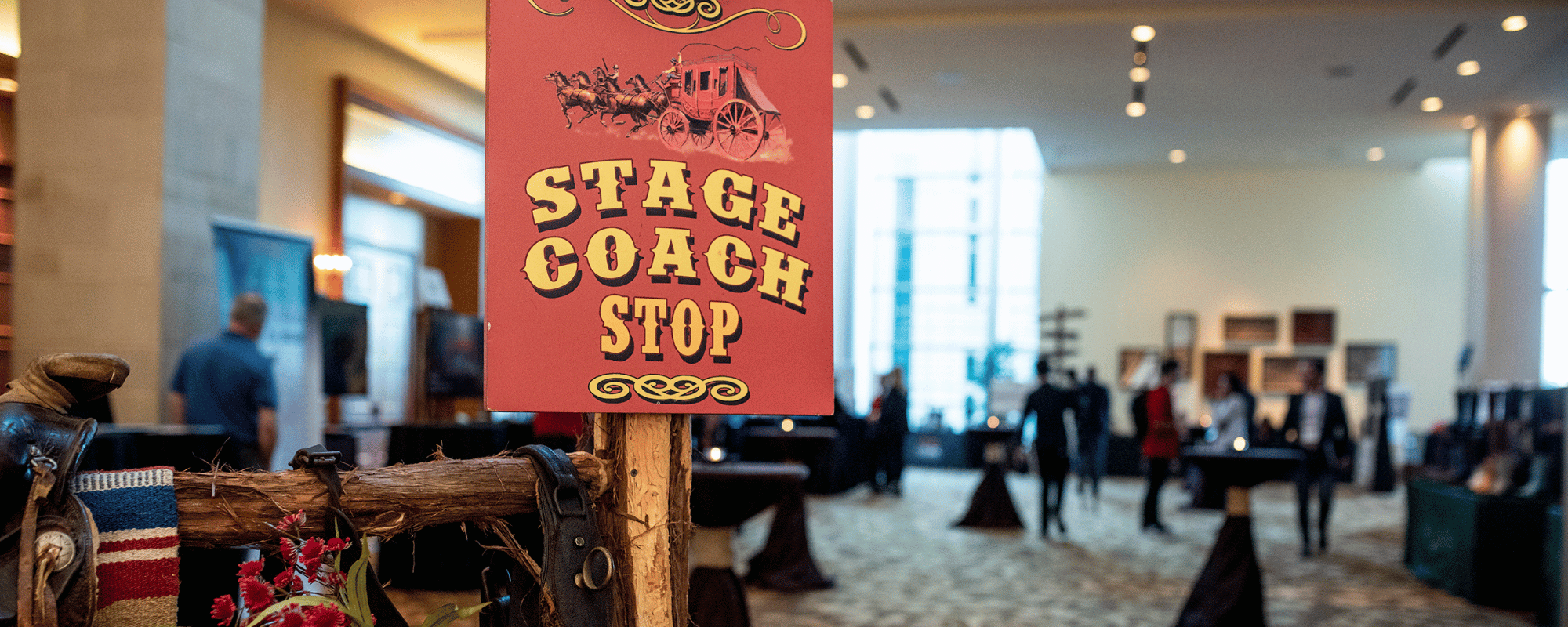
Your trade show.
Even something where other companies will be bringing in their own brands can incorporate your event brand. Whether it's branding your trade show floor or asking your exhibitors to contribute to your theme, you can make the expo feel like a natural extension of your event.
Post-event experience.
Your follow up and additional materials should continue to follow your event branding and evoke positive emotions associated with your event.

How to create an event brand.
Successful event branding takes multiple steps and thoughtful consideration.
Event branding strategy and ideation.
Once you've decided to host your event, the next important step will be to develop your event branding strategy.
Event branding strategies help you focus your goals and approach for developing the event brand, which in turn helps you create a strong brand identity at the event.
We recommend starting with a brainstorming session where you identify your goals and review the purpose of your event. This is a great time to begin thinking about themes and overall event identity. Make it a "yes and" brainstorming session, where no idea is too crazy.
Next, it's important to tie your ideas into your overall brand story and brand promise. Make sure the theme supports your company's values and isn't just a random name or idea that doesn't resonate with your brand.
Remember that a strong event brand both differentiates and ties into your overall brand.

Next it's time to think about the event experience and how to tie your brand into different elements of the event. Whether that's the event logo, branding throughout, messaging, attendee engagement, or other aspects, identify all the areas where your event brand might show up.
Lastly, if you're hosting a hybrid event or virtual event, think through how the brand may show up in those formats and how you can communicate it effectively.
Once you've completed the ideation portion, it's time to move on to the fun part: design and content
Design and content.
Now that you have your event brand, it's time to incorporate those brand elements into all the aspects of your event.
The design of your event brand should feel similar to your company branding but be unique enough to differentiate. We recommend creating a brand guide for the event much like you might make a brand guide for your entire company.
Design for events should include things like onsite branding, invitations, presentations, marketing materials like social media posts, agendas, event swag, and even smaller things like bar napkins or room drops.
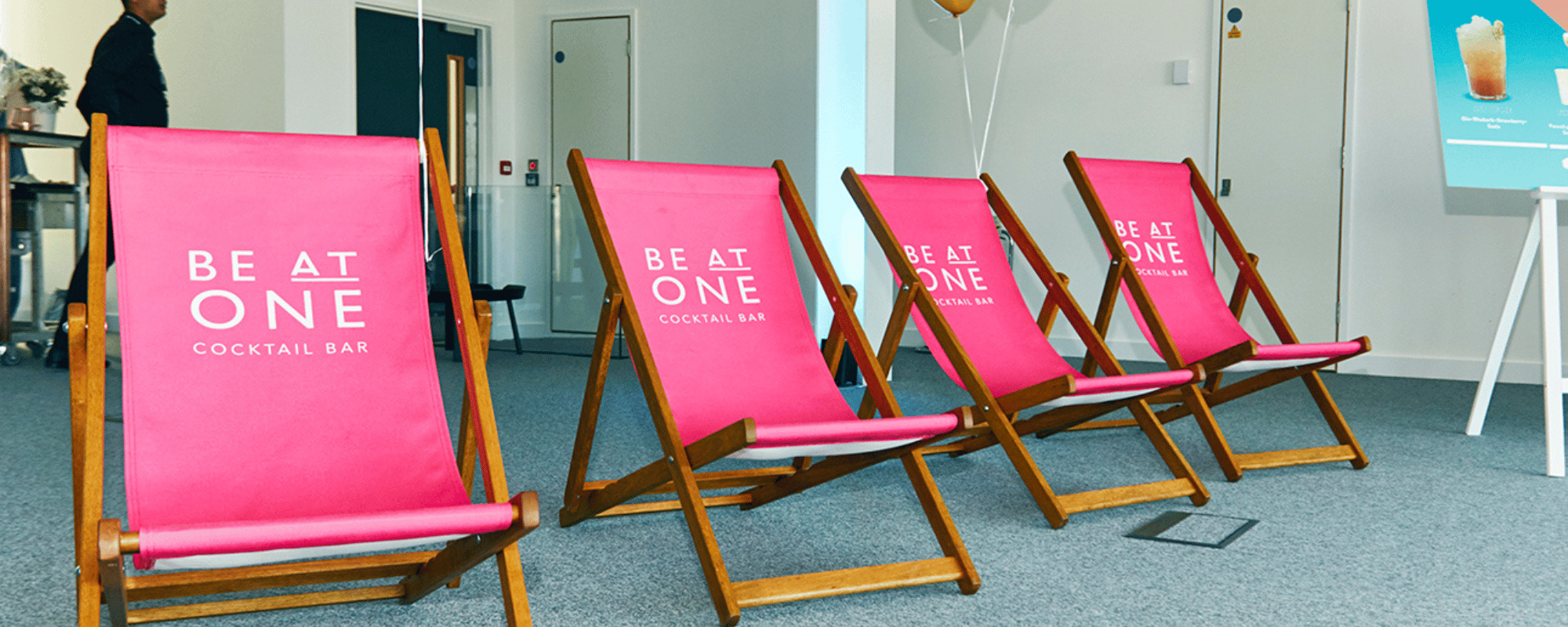
Think about how these elements tie together and don't be afraid to get creative with what you choose to brand.
Content is another area that can benefit from tying into your overall theme. When you're working with your speakers to come up with topics, or creating tracks for your breakout sessions, think about how you can tie the sessions into your event brand.
For instance, if your theme is "Innovate" then your tracks can have themes that branch off that central theme, and your speakers should focus on weaving in stories and lessons that support the theme.
Pre-event touchpoints.
Once you're ready to start building things like your event website, it's time to consider how your brand will show up prior to the event.
This is the time when you'll be sending out invitations and creating buzz around your event, and it's the first touchpoint your attendees will have with the event brand, so it's important to have a good plan for how you'll incorporate it throughout.
On your event website, consider what visual elements and what messaging elements you'll include. This could be including stories around your event theme, or tying the registration experience into your theme.
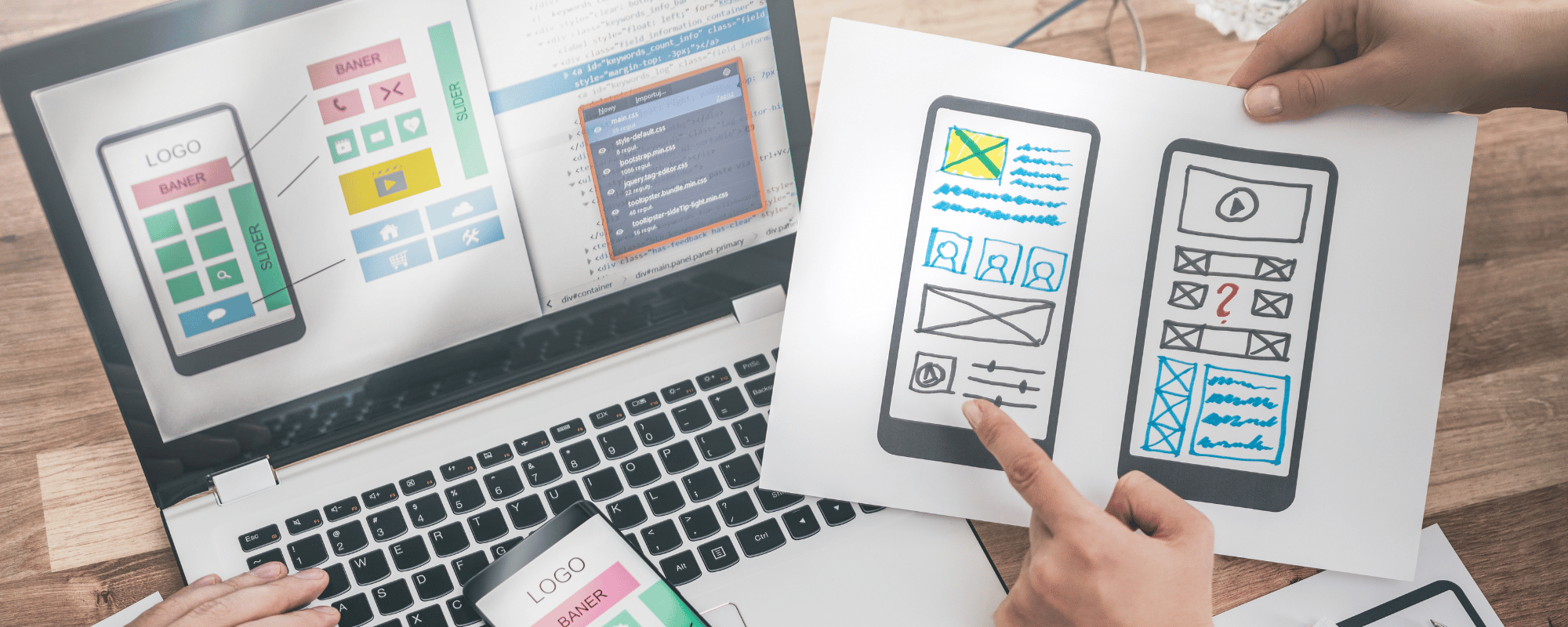
For example, if we go back to the "Innovate" theme, your event website should be innovative as well. Maybe it's just the look and feel, but maybe it's also the experience your attendees have while registering.
This also applies to any event apps you're looking to implement. The website and app should have the same look and feel, and contain similar content, to make the experience seamless.
Once your site is developed, it's time to consider event promotion. Whether it's on social media platforms, direct mail, email, or even phone calls, it's important to carefully think about how you want to get registrations and ticket sales.
Your messaging for these promotions should be clearly defined by your events team and the visuals should follow your event branding guide carefully.
Onsite branding.
While conducting your site visit prior to the event, it's important to clearly identify with the venue where you'll want your event branding to be placed.
Walk through the venue like you're an attendee and think through the experience. Do they need clear signage on where to walk? What kinds of branding will get them most excited for the event?
Work with an events agency to come up with creative ideas for branding that goes beyond just your standard wall clings.
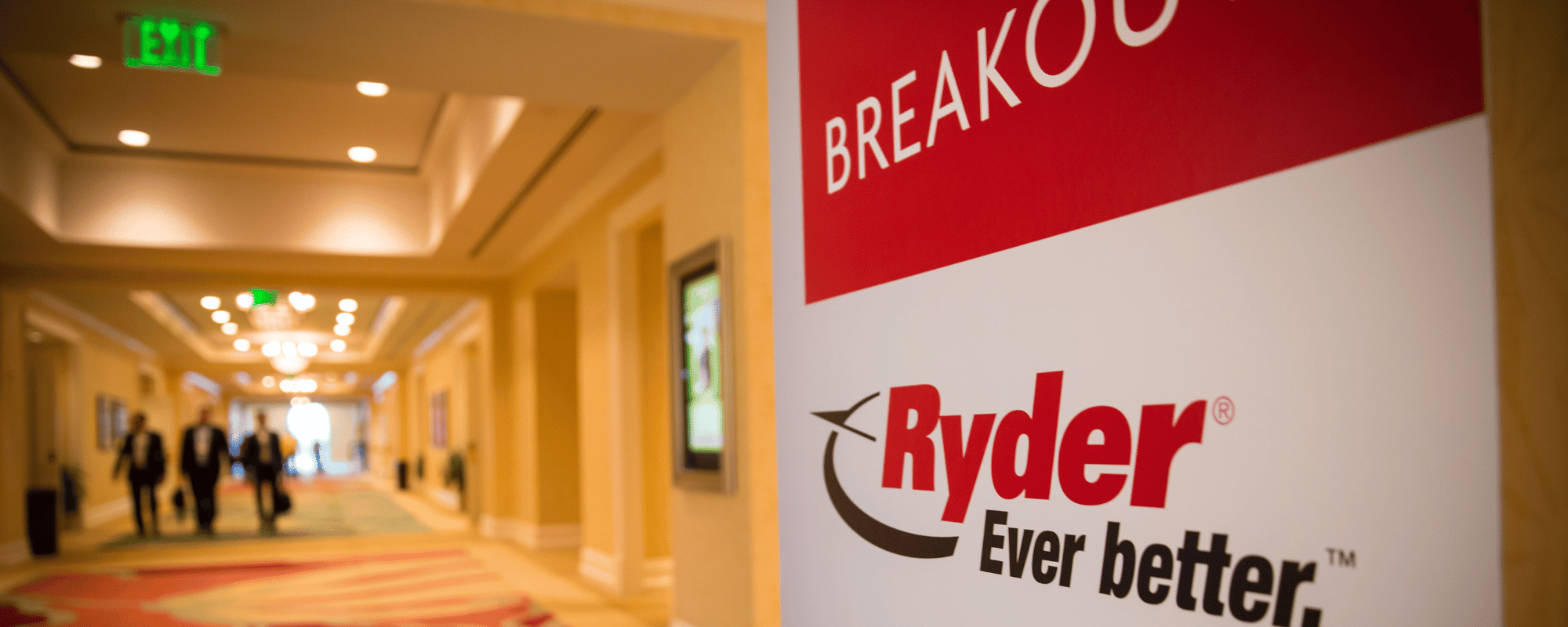
Other areas to consider for branding include:
-
Exterior venue branding
-
Registration branding
-
In-session branding
-
In-room branding such as room drops
-
Sponsored branding opportunities
-
Evening event options like bar napkins, glasses, or plates
Post-event branding.
Once your event ends, it's still important to consider how your event branding plays out in your post-event follow-up.
Whether it's a post-event survey, sending out additional communications, or sharing event content, you'll want to make sure you continue to follow your messaging and visual branding.
It's also important to do a debriefing post-event to discuss how the event brand was received, what can be improved for the next event, and how you can create continuity in branding for future events.
What makes successful event branding?
“I think the biggest thing for a lot of our clients right now is finding fresh ways to incorporate branding,” said Katie Moser, Director of Marketing and Business Development at GoGather, in an interview with Smart Start Radio. “The most mature companies are tying branding into every part of the event—from registration to pre-event materials to the event environment itself. We help them move beyond just picking a theme to really connecting their branding to the event’s overall message, almost like building a brand guide.”
Understand your goals and audience.
To make event branding successful, it's crucial to start with a clear understanding of your brand's identity and target audience.
Think of your event as an extension of your brand's personality and values.
Consider a recent event we hosted.
The organizers were looking for a theme that would excite their audience and get them thinking about the year ahead, but also underline their company's focus on people and purpose. Their attendees were leaders in the trucking industry, so it was important that the theme resonated with them.
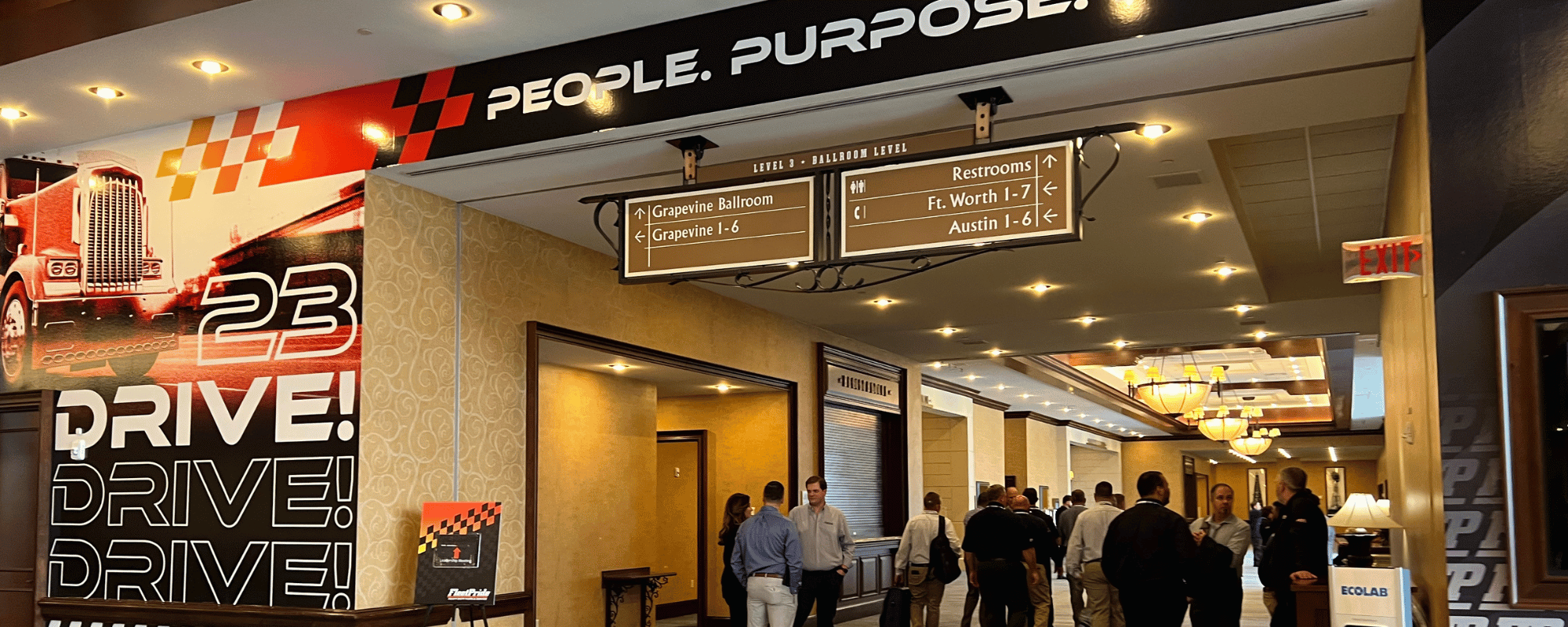
We helped our client craft an overarching theme of "DRIVE!" that was reflected in all communications, onsite branding, and content. Even the tradeshow floor and evening events carried this theme throughout, with race car and pit crew activities.
This focused theme that flowed throughout every aspect of the event ensured attendees understood the message and enjoyed connecting all the dots across the event.
Get buy in.
It's important to get stakeholders on board with your brand, whether it's the executives that are supporting the event or the speakers presenting onsite. Make sure everyone clearly understands the brand, the purpose of the theme, and how to communicate it onsite.
It's also important that those sending out communications about the event or posting online about it are provided resources to properly share the event brand.
Create consistency.
Another key aspect of successful event branding is consistency.
Ensure that your branding elements are integrated seamlessly throughout all touchpoints of the event. From the pre-event promotion to the onsite experience and post-event follow-up, maintaining a cohesive brand presence is essential.

With our client, that meant all touchpoints that attendees received or experienced had consistent branding. We created branding guidelines for the event itself and enforced them for every wrap, sign, invitation, handout, presentation, and more.
Messaging also needs to be consistent.
Speakers were given a brief prior to the event discussing the event brand and offering ways to incorporate it into their sessions. Sponsors were encouraged to participate in the theme as well.
Event branding example.
Let's take a look at how these pieces might come together in a real event theme. We'll start with an organizational goal to see how this could play out.
Imagine the company focus of the year as the always ubiquitous INNOVATION.
What's in a name.
Many people get hung up on the name.
And while the name of your event is important, most of your attendees will not be overly interested in it. Instead, the power lies in using the conference's theme to highlight your organizational focus.
For example, in our use case, even a generic conference theme like "Imagining Next," "Exploring Tomorrow," or "Innovating Health" could work if it flows well through the event.
Attendees would have the theme and, thus, the corporate goals continually but subtly reinforced with each mention or brand impression.
From a poster to an experience.
Most events do an excellent job of creating digital assets and printed collateral that is on-theme and on-brand. (If you aren't, that's some low-hanging fruit).
However, there is room to experiment with the broader experience. If a true attendee experience is your aim, here are four questions to start with:
-
Do the brand and theme visually connect at every touch point?
-
How could the schedule be supportive of the theme?
-
How might the layout be supportive of the theme?
-
How could entertainment be supportive of the theme?
In our previous example, this might manifest as:
-
Innovative schedule: Switching to Ted Talk formats one afternoon, more roundtable and brainstorming sessions, or bringing in speakers outside your vertical who help people innovate
-
Innovative layout: Blowing up the boring row of vendor tables and creating workshops led by some of your vendor/partners to highlight their expertise.
-
Innovative entertainment: Creating play stations where attendees can tinker with cutting-edge technology like VR to help them start thinking outside the box. Even the giveaways could tie back to the theme with a waterproof notepad for shower ideas.
Content is king.
Content is the core of your conference. It is often cited as why people attend and where they find the most value. Therefore, this should be at the top of your list and an excellent opportunity to infuse the theme.
-
When creating the agenda/topics, focus on connecting to the theme rather than just the same old sessions. Whether a product launch, corporate update, or a how-to session, consider how the goal of the content can support your overall theme and vision.
-
Ask your presenters to consider the theme as they build their presentations. A good tip is to ask them to include three key takeaways that tie back to the conference goals.
Most of these ideas require thoughtful planning, not additional budget. By incorporating themes into your events, you can create powerful brand experiences that support your organizational goals. And it's a safe bet that you will delight attendees as well.
The final thoughts.
Creating a memorable brand for your event is a process that takes careful consideration of your event goals, company goals, and attendees. All the elements of your brand can make an effective event or create a disjointed experience.
It's important to consider how you can make your event branding cohesive across your event, from visuals to messaging, and how you can get all stakeholders on board.
Need some help ideating on your next event brand? Let's chat about how GoGather can help you with every aspect, from theming to content.





